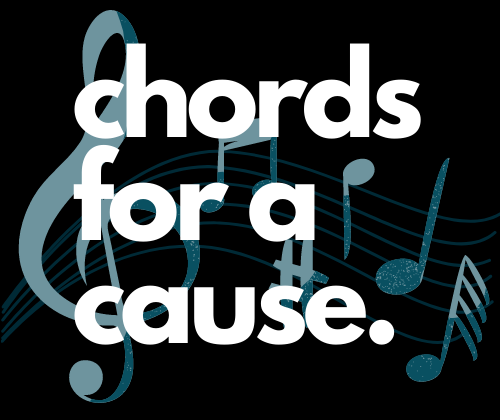Rise of Psychedelic Rock in the 1960s and Its Lasting Effects on Fashion, Art, and Music
The 1960s were a time of immense social, political, and cultural upheaval. Amidst the civil rights movement, anti-war protests, and a burgeoning counterculture, a new sound emerged that would forever alter the landscape of music and popular culture: psychedelic rock. Characterized by its experimental sounds, surreal lyrics, and vibrant visuals, psychedelic rock not only revolutionized music but also left an indelible mark on fashion, art, and society at large.
The Birth of Psychedelic Rock
Psychedelic rock, often synonymous with the counterculture movement of the 1960s, drew heavily from the use of mind-altering substances like LSD and marijuana. These substances inspired musicians to explore new realms of consciousness and creativity, leading to a sound that was both innovative and otherworldly. Bands like The Beatles, The Doors, Jefferson Airplane, and Pink Floyd spearheaded this musical revolution, experimenting with studio techniques, extended instrumental solos, and eclectic influences ranging from Eastern music to avant-garde art.
The Beatles’ 1967 album Sgt. Pepper’s Lonely Hearts Club Band is often cited as a pivotal moment in the psychedelic rock movement. Its kaleidoscopic soundscapes and lyrical themes of transcendence captured the spirit of the era and pushed the boundaries of what rock music could achieve. Similarly, Pink Floyd’s The Piper at the Gates of Dawn (1967) and The Doors’ self-titled debut album (1967) were landmark releases that showcased the genre’s capacity for innovation and introspection.
Psychedelic Fashion: A Vibrant Revolution
The influence of psychedelic rock extended far beyond music, infiltrating the world of fashion with its bold, colorful, and unconventional styles. The iconic looks of the 1960s and 1970s—think tie-dye shirts, bell-bottom pants, and flowing maxi dresses—were direct reflections of the era’s psychedelic aesthetics. Designers like Mary Quant and Emilio Pucci embraced vibrant patterns and vivid colors, creating garments that mirrored the trippy visuals associated with psychedelic rock.
The rise of hippie culture also played a significant role in popularizing psychedelic fashion. Festivals like Woodstock (1969) became showcases for these eclectic styles, where attendees donned fringed vests, floral headbands, and an array of accessories that celebrated individuality and freedom. The emphasis on self-expression and breaking away from conventional norms in fashion was a direct parallel to the ethos of psychedelic rock.
Artistic Expression: From Album Covers to Posters
Art and music have always been intertwined, and the psychedelic rock era was no exception. The album covers of this period were works of art in their own right, often featuring surreal, abstract, and fantastical imagery. Artists like Peter Max, Victor Moscoso, and Wes Wilson became renowned for their psychedelic posters and album covers, which employed vibrant colors, swirling patterns, and distorted typography to create visually stunning pieces.
One of the most iconic examples is the cover of The Beatles’ Sgt. Pepper’s Lonely Hearts Club Band, designed by Peter Blake and Jann Haworth. The collage-style cover, featuring an eclectic mix of historical and cultural figures, perfectly encapsulated the eclectic and boundary-pushing spirit of the album. Similarly, the intricate and otherworldly designs of Pink Floyd’s album covers, created by Storm Thorgerson and Hipgnosis, remain some of the most recognizable in music history.
Lasting Musical Influence
While the peak of psychedelic rock may have been in the 1960s and early 1970s, its influence on music has endured for decades. The genre paved the way for a multitude of musical styles, from progressive rock and heavy metal to modern indie and electronic music. Bands like Led Zeppelin, Black Sabbath, and later, Radiohead and Tame Impala, have all drawn inspiration from the experimental sounds and production techniques pioneered by psychedelic rock artists.
The resurgence of interest in vinyl records and the continued popularity of classic psychedelic albums among new generations of listeners further underscore the genre’s enduring legacy. Contemporary artists often cite the innovative spirit of psychedelic rock as a major influence, demonstrating how the genre’s emphasis on pushing creative boundaries continues to resonate in today’s music landscape.
The Cultural Impact: Beyond Music and Art
The impact of psychedelic rock extends beyond just music, fashion, and art; it also played a significant role in shaping broader cultural attitudes. The genre’s association with the counterculture movement helped to challenge societal norms and promote messages of peace, love, and unity. The experimentation with altered states of consciousness and the exploration of new philosophies and lifestyles influenced a wide range of cultural and social developments, from the rise of environmentalism to the ongoing quest for personal and collective liberation.
Psychedelic rock was more than just a musical genre; it was a cultural phenomenon that transformed the landscape of popular culture in the 1960s and beyond. Its revolutionary approach to music, fashion, art, and societal values continues to inspire and influence to this day. As we look back on this vibrant and transformative period, it is clear that the legacy of psychedelic rock is not only preserved but also celebrated and reinterpreted by new generations seeking to capture the spirit of innovation and freedom that defined an era.
Sources
- https://www.britannica.com/art/psychedelic-rock
- https://medium.com/rock-history-class-page/the-influence-of-the-1960s-and-psychedelic-music-on-culture-of-the-day-d68e296a1a75
- https://msmokemusic.com/blog/blog/rock-roll-the-psychedelic-years-expanded-edition
- https://www.agetimes.co.uk/entertainment/music-radio/the-rise-of-psychedelia

